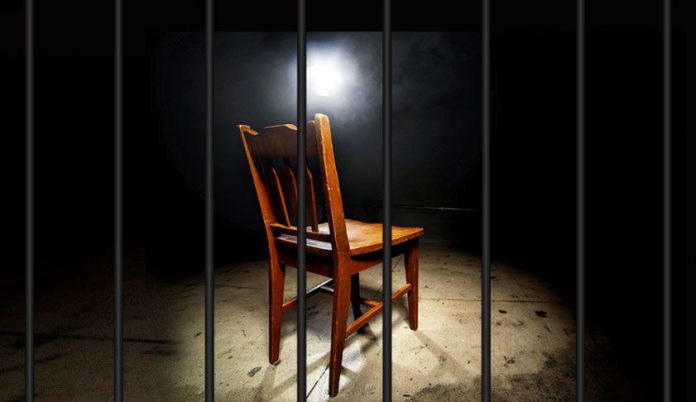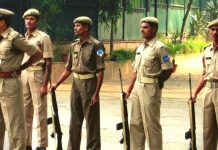This article is written by Shohom Roy, pursuing B.B.A LLB from Symbiosis Law School, NOIDA. This article examines the balance between the rights of protestors and the powers vested in the police under the United Kingdom’s PACE Act,1984.
Table of Contents
Introduction
The United Kingdom has upheld its legacy of trying to achieve a balance between the interest of the citizens and the power of the authoritarian entities of the State, with the codification of human rights in the form of the Human Rights Act, 1998. As a signatory to the European Convention of Human Rights, the UK has modelled its domestic law on human rights after the provisions mentioned in the European Convention of Human Rights (ECHR). Since the passing of the Magna Carta in 1215 to the enforcement of the HRA, 1998 the complexity within society has called for additional and stringent safeguards to protect the rights of the police.
Protests are democratic tools wielded by the common people time and again in order to inspire positive social transformation and improve a specific facet of human life. Protests encourage people to participate in the active citizenry and help cure defects in representative democracy which is the most prevalent form of governance amongst the countries of the world. The interplay between the legislations of the United Kingdom protects the right to peacefully protest while also allowing the government to restrict protests under certain circumstances for the sake of public order.
The right to protest
The United Kingdom is a signatory of major international human rights instruments like the International Covenant on Civil and Political Rights (ICCPR), the Convention Against Torture (CAT) and the Convention on the Rights of Persons with Disabilities(CRPD). Therefore the government must be careful in fulfilling its international obligations while introducing any contravening legislation. The United Kingdom recognizes the right to freedom of peaceful assembly guaranteed under Article 21 of the ICCPR. The right to peaceful protest is a non-derogable right and has been granted to all individuals without any discrimination and covers all kinds of peaceful protests. The law mandates that the participants of an assembly showing non-violent conduct be granted protection under Article 21 of the ICCPR. However, violence by some members of a protest does not snatch away the right granted to the other participants. A peaceful protest can advocate controversial issues and cause disruptions but it is still covered under Article 21. The instigation of hostility and animosity from others holding different views does not provide a legitimate ground for restricting the right to protest under the garb of public order.
Under Article 11 of the Human Rights Act, 1998 which replicates the European Convention on Human Rights, the right to freedom of peaceful assembly has been granted to every individual. The right to protest is an extension of the right to peaceful assembly and the right to expression. Protests include peaceful marches, demonstrations, press conferences, public and private meetings, counter-demonstrations, sit-ins, motionless protests, flash mobs and candlelit vigils. The Courts have given significant importance to the location of a protest in the case of Hall vs Mayor of London (2010) to establish that protestors have the right to assemble for the purpose of expressing their dissent at the location where they wish to express and exchange their views. However, organizing an assembly at a private place without the owner’s consent can make the participants and the organizers liable for trespass. The law assumes that the government must show a reasonable degree of tolerance for the disruption caused by these protests.
As per the domestic and international legislation on human rights, the state has some obligations with respect to the protection of the people’s right to protest. The government should ensure that there should be interference with the peaceful assemblies including sanctions on organizers or participants only on the basis of legitimate and justifiable grounds. The jurisprudence regarding the restriction on the right to assembly revolves around the fact that such restrictions must be ‘narrowly construed’ and ‘convincingly established’. This actively demonstrates that the state can adopt legislative and institutional measures or undertake pragmatic measures for the purpose of facilitating the exercise of the right to protest. The state should also conduct an unbiased investigation into the functioning of the authoritarian entities and seek methods to alleviate the difficulties encountered by the people while exercising their right to protest.
The Police and Criminal Evidence Act,1984
The Police and Criminal Evidence Act, 1984 was passed in order to instil a sense of accountability among the police force, maintain safeguards while improving police efficiency and bring a system of transparency and accessibility. The Police and Criminal Evidence Act (PACE) has a number of operational codes which prescribe the procedure to be followed by the police while exercising their powers.
- Code A of the Act deals with the powers of the strip and search.
- Code B talks about the seizure of property and searching of premises.
- Code C lays down the requirements for detention, treatment, and questioning of suspected individuals in police custody for offences other than terrorism.
- Code D sets out the process to be followed for the identification of people during the investigation of an offence and the necessity for accurate and reliable criminal records.
- Code E and Code F deal with the audio recording of interviews in police custody in a non-visual and visual manner respectively.
- Code G talks about the power of arrest and
- Code H is regarding the detention, treatment and questioning of suspected individuals associated with terrorist activities.
Striking a balance between rights and power
The police have the power to stop and search protestors under the Police and Criminal Evidence Act,1984 on reasonable grounds of carrying prohibited or stolen items. In the case of Howarth v. Commissioner of the Police of the Metropolis (2011), the Divisional Court dismissed the charge of unlawful stop and search during a protest against the oil industry. The Court held that according to past experiences participants of protests against oil industries have caused considerable damage and the carrying of molasses was adequate for raising suspicions about the small group of protestors. The prohibited items include offensive weapons like bladed or pointed items, articles used in theft, spray paint cans and tools as well as fireworks, drugs, firearms, etc. However, the law mandates that when a search is made a record must be kept as evidence.
The police officer must state his name along with the object of the search before conducting a stop and search. The suspect must be notified of the police station under which the police officer, conducting the search, is employed as well as the reasonable grounds for conducting the search. If the police officer is not in his official attire, he must show his warrant card before exercising his powers under the PACE Act. There are certain blanket search powers that allow the police to search large groups of people at public places with no reasonable protection. Section 60 of the Criminal Justice Act,1994 allows a police officer to search any person within a specific area for offensive weapons during a specified time period. Under Section 47A of the Terrorism Act 2000 (Remedial) Order 2011 the police have the power to search anyone without reasonable suspicion for terrorist activities.
Though Section 11 of the Public Order Act,1986 requires a notice to be sent to the police regarding the organization of a protest, compliance with the aforementioned law is not mandatory when organising a public assembly for a static demonstration. However, it is an offence to organise a protest march without notifying the police and the organizers may be held liable for acting in contravention to the details given in the notice. The police must cite a justifiable and reasonable ground for safeguarding public order while prohibiting a protest. Acts like obstruction of highways, aggravated trespass, and public order offences entail a range of sentences with the more serious offences punishable by length prison sentences.
Recent protests
The anti-capitalistic and climate change protests in April 2009 during the G20 summit highlighted the utter disregard for human rights and abuse of power by state authoritarian entities. The policing of the ‘Climate Camp’ near the offices of the European climate exchange led to violence between the police and the protestors and even the death of a newsagent who was trying to navigate his way home. The culmination of these events led to three parliamentary committee reviews into policing of protests as well as a review conducted by Her Majesty’s Inspectorate of Constabulary. It also led to the dismissal of the police officer from the Metropolitan Police Services responsible for the death of the innocent bystander on the grounds of ‘gross misconduct’.
Members of a global environmental movement named Extinction Rebellion initiated a number of nonviolent civil disobedience protests during the course of the year 2019 across multiple sites in London. The Metropolitan Police Service was criticized for its inability to issue orders and arrest individuals who were in contravention of the law. The protestors had organised ‘sit-ins’ and used tactics like ‘lock-on’ by affixing themselves to a stationary object thereby making it harder for the police to move them. However, the Metropolitan Police Service issued a directive under Section 14 of the Public Order Act,1986 declaring the ban on the movement and regrouping of the protestors at different locations in London. However, the High Court declared that the ban imposed under Section 14 was illegal since the assembly of people in separate groups under the umbrella of a single cause cannot be interpreted as a public assembly. Moreover, the MPS had bypassed the requirement of obtaining the consent of the Home Secretary and created a dangerous precedent of banning future assemblies according to the whims of the officials at the MPS. The judgment of the High Court defends the right to peaceful assembly and ensures that the policing of demonstrations must take place within the existing legal framework.
Legislative reform
The joint committee on human rights investigated the legality of the stop and searches conducted by police officials during the policing of protests. The investigation revealed that police officers could search any individual whom they reasonably believed to be involved in terrorist activities. The European Court of Human Rights while listening to the case of two participants of a protest outside an arms fair who were subjected to arbitrary searches by the police, declared that there was a flagrant violation of the right to privacy and the right to peaceful assembly under Article 8 and Article 11 of the European Convention of Human Rights. The Government accepted the judgment of the European Court of Human Rights and revised the powers of the police by introducing provisions in the Protections of Freedoms Act, 2012.
Conclusion
There has been constant pressure from various non-governmental and international human rights organizations to reform the current legal framework for policing protests. In light of these circumstances, the UK government has introduced the Police, Crime, Sentencing and Court Bill in the Parliament to bring about major changes in the manner protests are handled across the country. However, some critics have raised concerns over the new Bill. The implementation of vague laws that appear to strengthen the cause of human rights whereas in application create an environment where people are discouraged from pursuing their rights could be the motive behind the introduction of the Bill. This ‘chilling effect’ might cause the fear of prosecution coupled with criminal and civil punishments. It might also lead to constant surveillance creating a risk of loss of privacy. The government could track every individual and brand them as a criminal or deviants. The usage of police tactics like restricting participants of a protest within a specific area until they can be dispersed along with stop and search can have a ‘chilling effect’ on the people. Collection of information about participants with no criminal record in the National Domestic Extremism Database and the use of international mobile subscriber identity to gain information about the organizers and participants of a particular protest can have serious ramifications in the world of human rights. This abuse of power must be checked so as to ensure that the state does not criminalise dissent among the people.
References
- https://www.law.ox.ac.uk/sites/files/oxlaw/opbp_report_on_the_law_on_policing_peaceful_protests_0.pdf
- https://www.legislation.gov.uk/ukpga/1984/60/contents
Students of Lawsikho courses regularly produce writing assignments and work on practical exercises as a part of their coursework and develop themselves in real-life practical skills.
LawSikho has created a telegram group for exchanging legal knowledge, referrals, and various opportunities. You can click on this link and join:
https://t.me/joinchat/J_0YrBa4IBSHdpuTfQO_sA
Follow us on Instagram and subscribe to our YouTube channel for more amazing legal content.
 Serato DJ Crack 2025Serato DJ PRO Crack
Serato DJ Crack 2025Serato DJ PRO Crack











 Allow notifications
Allow notifications



